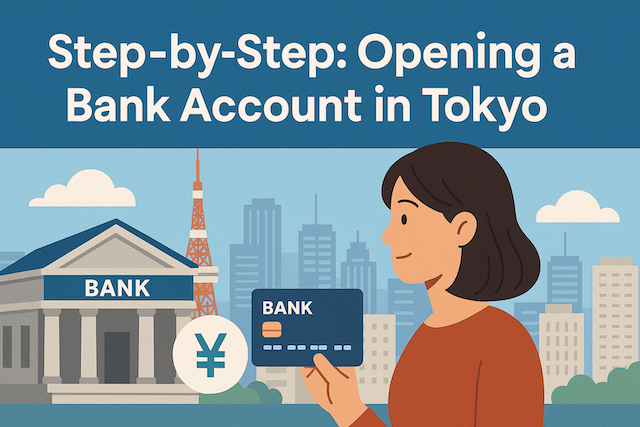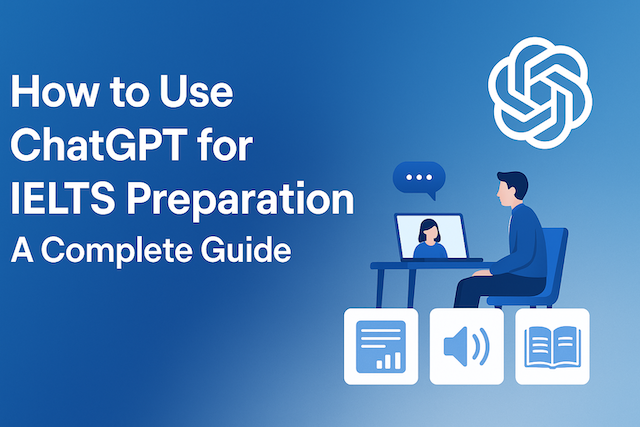Step-by-Step: Opening a Bank Account in Tokyo

Contents
- Step-by-Step: Opening a Bank Account in Tokyo
- 1. Who Can Open a Bank Account in Japan?
- 2. Documents You Need
- 3. Step-by-Step Process
- 4. Types of Accounts Available
- 5. English-Friendly Banks Compared
- 6. What You Can Do With Your Bank Account
- 7. How to Transfer Money Internationally
- 8. Common Challenges and Solutions
- 9. Can Tourists Open a Bank Account?
- 10. Online-Only Banking Options
- 11. Banking and Taxes
- 12. Banking Tips for Foreigners
- 13. Can You Have Multiple Bank Accounts?
- 14. What Happens If You Leave Japan?
- 15. Conclusion
- Frequently Asked Questions
- Can I open a bank account in Tokyo as a tourist?
- Which bank is best for foreigners in Tokyo?
- What documents do I need to open a bank account?
- Is a personal seal (inkan/hanko) required?
- Can I open a bank account online?
- Do I need a Japanese phone number?
- Can freelancers or digital nomads open an account?
- How long does it take to get a bank card?
- What type of bank account should I choose?
- Are English-speaking staff available at banks?
- Can I receive international payments with a Japanese bank account?
- Do banks charge monthly fees?
- Can I open multiple bank accounts?
- What happens to my bank account when I leave Japan?
- Is my My Number card always required?
Step-by-Step: Opening a Bank Account in Tokyo
A Complete Guide for Expats and Digital Nomads
Opening a bank account in Tokyo as a foreign resident can seem daunting. From language barriers to unfamiliar paperwork, the process might feel like navigating a bureaucratic maze. But with the right preparation, opening a Japanese bank account is straightforward and absolutely doable.
This step-by-step guide will walk you through everything you need to know — requirements, best banks for foreigners, the account opening process, types of accounts, and useful tips.
1. Who Can Open a Bank Account in Japan?
You can open a bank account in Tokyo if:
-
You are 18 years or older
-
You reside legally in Japan (tourists are generally not eligible)
-
You have a valid visa (student, work, dependent, business, etc.)
-
You possess a Japanese address (with proof)
-
You have a Resident Card (在留カード / Zairyū kādo)
Note: Some banks may ask for at least 6 months of residency, while others (like Japan Post Bank or SBI Shinsei) are more lenient.
2. Documents You Need
Be sure to bring the following:
| Required Item | Notes |
|---|---|
| ✅ Residence Card (Zairyū Card) | Must be valid and up to date |
| ✅ Passport | Especially important for first-time residents |
| ✅ Japanese address proof | Shown on your Residence Card or utility bill |
| ✅ Personal stamp (inkan/hanko)* | Optional, but may be requested at some banks |
| ✅ Phone number (local) | Japanese mobile number preferred |
| ✅ My Number card (マイナンバー)** | Sometimes required for compliance |
*Inkan is less necessary at modern or foreigner-friendly banks
**Some banks ask for your My Number, especially for tax purposes
3. Step-by-Step Process
Step 1: Choose the Right Bank
Not all banks are equally friendly to foreigners. Choose a bank with English service, online tools, and lower entry requirements.
Top picks:
-
SBI Shinsei Bank – Best for foreigners, online banking in English, no hanko needed
-
Japan Post Bank (ゆうちょ銀行) – Ubiquitous, easy for students and short-term residents
-
Rakuten Bank – Online bank, good for digital nomads
-
SMBC Prestige / MUFG Global branches – Major banks with expat desks
-
Sony Bank / Prestia SMBC Trust – Great English support
Avoid traditional regional banks unless you speak fluent Japanese.
Step 2: Visit a Branch or Apply Online
Some banks let you apply online, but most still require an in-person visit (especially for first-time residents).
Tips:
-
Choose a branch in central Tokyo or near foreigner-heavy areas (e.g., Shinjuku, Roppongi, Ikebukuro)
-
Check business hours: usually 9:00–15:00, Mon–Fri
Step 3: Fill Out Application Forms
You’ll fill out a form with:
-
Name (in Roman and Katakana)
-
Address in Japan
-
Occupation or school (for students)
-
Phone number
-
Nationality and visa type
-
Signature or inkan
Bring a Japanese speaker if you’re not confident. Some branches provide bilingual support.
Step 4: Provide Your Documents
Hand over your residence card and passport. Bank staff may photocopy them.
If asked for your My Number, you can show the card or fill out a self-declaration form.
Step 5: Wait for Approval
In many cases, you’ll receive:
-
Cash card immediately (ATM use)
-
Bank book (通帳) – Optional in online-first banks
-
PIN code setup (done on-site or mailed)
-
Online banking credentials within a few days
Some banks may take 1–2 weeks to approve and mail you the card.
4. Types of Accounts Available
| Account Type | Description |
|---|---|
| 普通預金 (Futsuu yokin) | Regular savings account for daily use |
| 定期預金 (Teiki yokin) | Fixed deposit account for long-term savings |
| 外貨預金 (Gaika yokin) | Foreign currency deposit (USD, EUR, etc.) |
| 円建て口座 | Yen-denominated account (standard for local payments) |
| ネット専用口座 | Online-only account (like Rakuten or Sony Bank) |
As a foreigner, you will likely open a Futsuu Yokin account.
5. English-Friendly Banks Compared
| Bank Name | English Support | Online Banking | Easy for Foreigners | Notes |
|---|---|---|---|---|
| SBI Shinsei Bank | ✅✅✅ | ✅✅✅ | ✅✅✅ | Best all-around |
| Japan Post Bank | ✅ (some) | ✅ | ✅✅ | Widely available |
| Rakuten Bank | ✅✅ | ✅✅✅ | ✅✅ | Fully online |
| MUFG | ✅ (expat branch) | ✅ | ✅ | Large network |
| Sony Bank | ✅✅✅ | ✅✅✅ | ✅✅✅ | Good for digital nomads |
6. What You Can Do With Your Bank Account
-
Receive your salary or freelance payments
-
Pay rent and utility bills
-
Withdraw from ATMs
-
Make online purchases
-
Use internet banking or mobile app
-
Transfer funds to other Japanese or international accounts
7. How to Transfer Money Internationally
To send or receive money abroad:
-
Use Wise (formerly TransferWise), Western Union, or Remitly linked to your bank
-
Some banks like Shinsei and Prestia support SWIFT transfers
-
Fees range from ¥500–¥3,000 depending on bank and method
8. Common Challenges and Solutions
| Problem | Solution |
|---|---|
| Language barrier | Choose banks with English support (Shinsei, Sony) |
| Hanko required | Go to banks that accept signature (e.g., Shinsei) |
| My Number not available | Ask if self-declaration form is acceptable |
| Proof of employment needed | Use student ID or explain freelance status clearly |
| Address not yet fixed | Use a temporary one but update as soon as possible |
9. Can Tourists Open a Bank Account?
Generally, no. Japanese banks require a residence card and a local address. If you’re on a 90-day tourist visa, you’re unlikely to succeed unless it’s a prepaid service.
10. Online-Only Banking Options
These are great for nomads and freelancers:
-
Sony Bank – English service, multi-currency support
-
Rakuten Bank – Linked to Rakuten ecosystem
-
PayPay Bank – Ideal for QR-based payments
-
LINE Bank (beta) – Connected with LINE Pay
Note: Online banks may require Japanese literacy for setup.
11. Banking and Taxes
Once you open an account, some banks will ask for your My Number for tax reporting purposes.
If you’re self-employed or freelancing:
-
Keep clear records of your income
-
Link your bank account to bookkeeping software (e.g., Money Forward)
-
Declare income yearly with the kakutei shinkoku (tax return)
12. Banking Tips for Foreigners
-
Open your account as early as possible after arrival
-
Use Katakana when writing your name for consistency
-
Avoid using middle names unless required (can confuse the system)
-
Be polite, dress neatly, and speak slowly if in Japanese
-
Use ATMs inside convenience stores (7-Eleven, FamilyMart) for better English options
13. Can You Have Multiple Bank Accounts?
Yes. Many expats have:
-
One for salary
-
One for rent/expenses
-
One for international transfers or savings
There are no legal limits, but managing multiple accounts requires careful tracking.
14. What Happens If You Leave Japan?
Close your account before you leave Japan to avoid complications or dormant fees.
Steps:
-
Withdraw remaining funds
-
Visit a branch with your Residence Card
-
Fill out a closure form
-
Destroy your card or return it
15. Conclusion
Opening a bank account in Tokyo as a foreigner is totally achievable with the right preparation. Choose the right bank, bring the required documents, and be ready to navigate a bit of paperwork.
For digital nomads, online-first banks like Shinsei or Sony Bank make it easier than ever to bank in Japan — even with limited Japanese skills.
Stay organized, keep your records in order, and your Tokyo banking life will be smooth, efficient, and foreigner-friendly.
Frequently Asked Questions
Can I open a bank account in Tokyo as a tourist?
No. Tourists generally cannot open a bank account unless they have a valid long-term visa and a residence card.
Which bank is best for foreigners in Tokyo?
SBI Shinsei Bank, Sony Bank, and Japan Post Bank are popular for their English support and ease of account opening for foreigners.
What documents do I need to open a bank account?
Typically, you need a valid Residence Card, passport, Japanese address, and a phone number. Some banks may request your My Number card.
Is a personal seal (inkan/hanko) required?
Some traditional banks require it, but many modern or international banks accept signatures instead.
Can I open a bank account online?
Yes, especially with online banks like Rakuten Bank or Sony Bank. However, first-time residents may still need to verify identity in person.
Do I need a Japanese phone number?
Yes, most banks require a Japanese mobile number to contact you and verify your identity.
Can freelancers or digital nomads open an account?
Yes. Explain your work status clearly. Some banks may ask for additional details if you are self-employed or a freelancer.
How long does it take to get a bank card?
Some banks issue cards on the same day. Others mail them within 5–10 business days.
What type of bank account should I choose?
The most common is a Futsuu Yokin (ordinary savings account), suitable for daily use and ATM access.
Are English-speaking staff available at banks?
Yes, especially at major banks in central Tokyo or international branches. Always check the branch in advance.
Can I receive international payments with a Japanese bank account?
Yes. Use SWIFT codes or services like Wise. Some banks offer multicurrency support.
Do banks charge monthly fees?
Most basic accounts have no monthly fees, but online banking or international services may have charges.
Can I open multiple bank accounts?
Yes, there is no legal limit. Many expats have one for salary and another for savings or international transfers.
What happens to my bank account when I leave Japan?
You should close your account before departure by visiting a branch with your ID and withdrawing any remaining funds.
Is my My Number card always required?
Not always, but some banks may request it for tax reporting. If you don’t have it, ask about alternative declarations.




